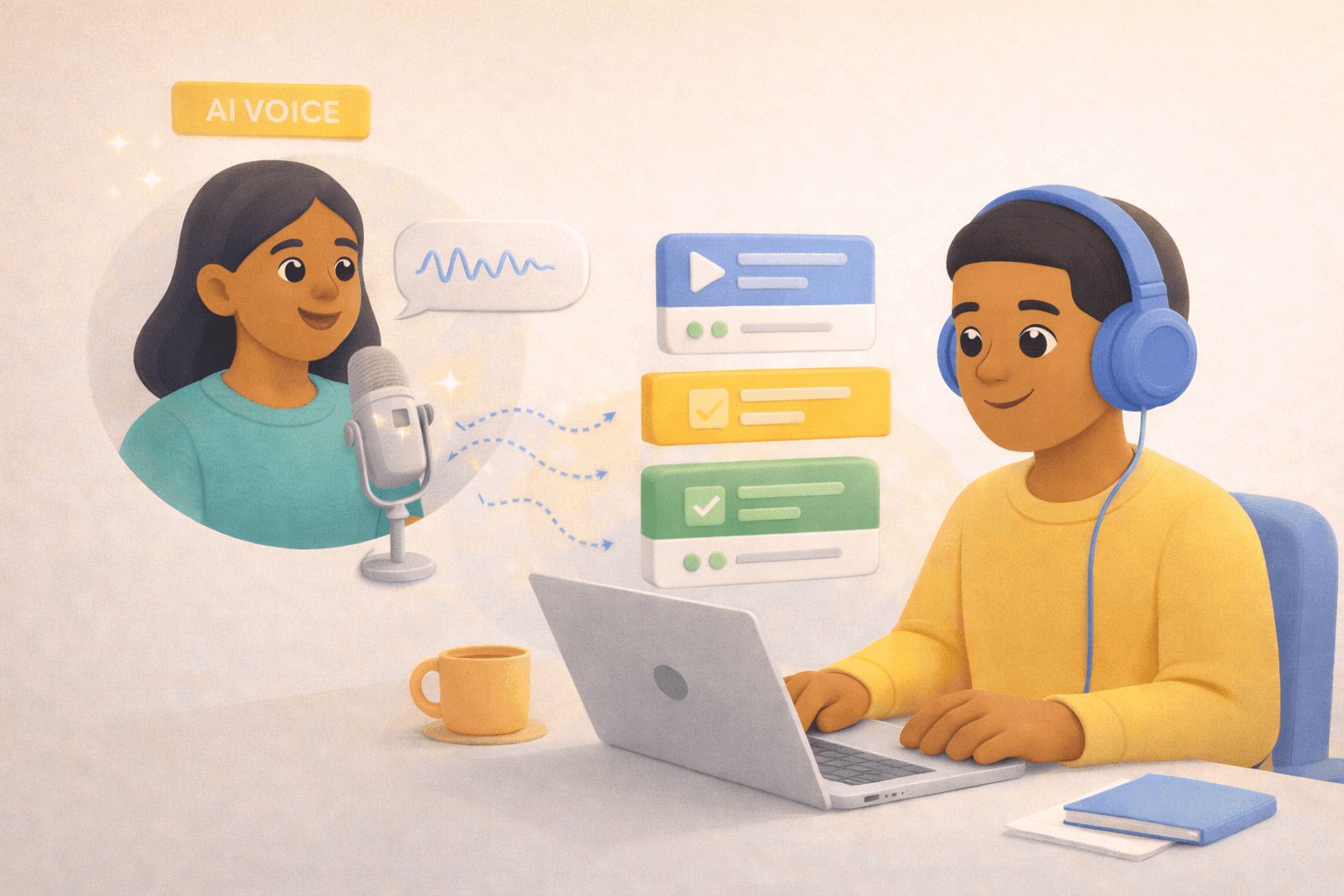Curating knowledge
Best Alternative to LMS and How Embedded Learning Transforms L&D
Many businesses still rely on traditional Learning Management Systems (LMS) to facilitate employee training and development. However, these legacy systems often create friction—employees resist engaging with them, leading to low adoption and retention rates. As workplace learning evolves, companies are increasingly turning to embedded learning solutions that integrate training directly into the tools employees already use daily.

Ryan Macpherson
Apr 21, 2025



Editor:
Stephanie Chan
The Shift from Traditional LMS to Embedded Learning
This shift isn't just theoretical—forward-thinking companies are proving that embedding learning into workflows leads to higher engagement, better knowledge retention, and improved performance. Let's explore how organizations are embracing headless learning to revolutionize their L&D strategies.
The Limitations of Traditional Learning Management Systems
Traditional Learning Management Systems (LMS) have long been the cornerstone of employee training and development, but they come with significant limitations. One of the primary drawbacks is their rigidity and inflexibility, which makes it challenging to adapt to the ever-evolving needs of businesses. These systems often require employees to navigate cumbersome interfaces outside of the everyday platforms they work in, leading to low learner engagement and high dropout rates.
Moreover, traditional LMS platforms tend to prioritize compliance and tracking over fostering genuine learner engagement and competence. This focus can result in training programs that lack meaningful learning outcomes, leaving employees unmotivated and disengaged. The high costs and substantial resources needed to implement and maintain these systems can also be prohibitive, especially for small and medium-sized businesses.
Another critical limitation is the inability of traditional LMS platforms to support modern learning approaches, such as mobile learning and social learning. These platforms often rely on a one-size-fits-all approach, which fails to provide personalized learning experiences tailored to individual needs and preferences. In contrast, modern learning platforms are designed to offer more flexible, engaging, and personalized training solutions that better meet the demands of today’s workforce.
Why Embedded Learning Works for Learner Engagement
Learning in the Flow of Work
Traditional LMS platforms require employees to log into separate systems, disrupting their workflow. With embedded learning, training materials are available directly within tools like CRMs, customer support platforms, or project management software, making learning seamless and unobtrusive.
Higher Adoption & Engagement
Employees are more likely to engage with training when it’s integrated into their daily tasks. Instead of scheduling separate training sessions, teams can access on-demand, contextual learning experiences precisely when they need them. This helps employees complete tasks efficiently by providing the necessary resources at the right time.
The Role of Coassemble’s Headless API in Knowledge Transfer
Coassemble’s Headless API enables companies to seamlessly integrate learning content into any workplace tool. This means training can be surfaced inside Slack, Salesforce, Zendesk, or even proprietary internal platforms—wherever employees are already working.
Key Benefits of a Headless Learning Solution:
Frictionless Learning: No need for employees to switch between systems
Personalized Training: Deliver relevant content based on role, task, or workflow
Scalability: Easily update and distribute learning across multiple locations
AI-Powered Content Adaptation: Leverage artificial intelligence to automate and tailor training based on performance
Alternatives to Traditional LMS
As organizations seek more effective ways to manage employee training, several alternatives to traditional Learning Management Systems (LMS) have emerged. One such alternative is the Learning Record Store (LRS), a centralized repository that tracks and stores learning activities. LRS platforms offer greater flexibility and adaptability, supporting a wide range of learning formats and activities.
Authoring tools are another valuable alternative, enabling users to create and publish online learning content with ease. These tools are designed to be user-friendly and accessible, allowing for the creation of diverse and interactive learning experiences. By leveraging authoring tools, organizations can develop customized training materials that cater to specific learning needs.
Content Management Systems (CMS) also present a viable alternative to traditional LMS platforms. CMS platforms are designed to manage and deliver online content, supporting various learning formats and activities. Their flexibility and adaptability make them suitable for a wide range of learning approaches and strategies, providing a more dynamic and engaging learning experience.
Finally, modern learning platforms are designed to offer personalized and engaging learning experiences. These platforms support a variety of learning formats and activities, making them more flexible and adaptable than traditional LMS platforms. By focusing on learner engagement and personalized experiences, modern learning platforms can better meet the needs of today’s workforce.
ROI & Impact: Does Embedded Learning Deliver Results?
The numbers don’t lie—organizations that move away from traditional LMS models and embrace embedded learning see tangible benefits, such as:
Higher completion rates due to contextual learning delivery
Faster onboarding times through automated, just-in-time training
Reduced employee turnover by providing continuous learning opportunities
With AI-powered training tools, companies can ensure employees receive timely, relevant, and engaging learning experiences without disrupting productivity.
These AI-powered training tools also provide valuable feedback that helps organizations continuously refine and improve the learning experience.
How to Implement an Embedded Learning Strategy for Employee Training
If you’re considering transitioning from a traditional LMS to a headless, embedded learning approach, follow these steps:
Step 1: Identify High-Impact Learning Touchpoints
Determine where employees struggle with knowledge gaps—customer support platforms, CRM software, internal knowledge bases, etc.
Step 2: Choose the Right Technology
Leverage a Headless API-powered platform like Coassemble to seamlessly integrate learning content into these touchpoints.
Step 3: Design Microlearning Experiences
Break training into bite-sized, contextual learning modules that employees can access when needed. Effective content creation tools are essential in developing these microlearning experiences. Additionally, incorporating interactive elements such as quizzes and gamification can significantly enhance learner engagement and retention.
Step 4: Automate Training with AI
Use AI-powered course creation to convert documents, SOPs, and training manuals into interactive learning experiences. AI can also repurpose existing resources into new formats, making it easier to keep training materials up-to-date and relevant.
Step 5: Measure & Optimize
Track adoption, engagement, and performance to continuously refine and improve the embedded learning experience.
Employee Onboarding and Embedded Learning
Employee onboarding is a crucial process that sets the stage for new employees’ success. Embedded learning plays a vital role in this process by providing new hires with the knowledge and skills they need to perform their jobs effectively. Through various forms such as video lectures, interactive simulations, and gamification, embedded learning ensures that new employees receive a comprehensive and engaging onboarding experience.
One of the key advantages of embedded learning is its ability to deliver personalized training tailored to the individual needs and preferences of new employees. This approach not only accelerates the onboarding process but also reduces associated costs. By providing new hires with the necessary knowledge and skills from day one, embedded learning helps them become productive members of the team more quickly.
Additionally, embedded learning significantly enhances employee engagement and retention. When new employees feel supported and empowered to succeed in their roles, they are more likely to be motivated and committed to the organization. This, in turn, leads to lower turnover rates and higher job satisfaction.
Furthermore, embedded learning contributes to a positive company culture by promoting continuous learning and improvement. By offering personalized learning experiences, organizations can ensure that new employees feel valued and equipped to excel in their roles. This fosters a culture of growth and development, ultimately benefiting both the employees and the organization as a whole.
Future of Learning: The End of Standalone Learning Management System?
As AI and automation continue to evolve, headless, embedded learning will become the norm. Organizations that adapt early will reap the benefits of higher engagement, better retention, and streamlined knowledge transfer—while those clinging to outdated LMS models may struggle with disengaged employees and inefficient training programs.
Is your organization ready to embrace the future of workplace learning?
Learn how Coassemble can help you implement AI-powered embedded learning today!
Read More
Join the knowledge revolution today
Unlock knowledge. Boost engagement. Drive results
No credit card required

Join the knowledge revolution today
Unlock knowledge. Boost engagement. Drive results
No credit card required

Join the knowledge revolution today
Unlock knowledge. Boost engagement. Drive results
No credit card required




